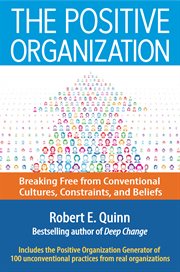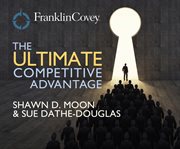INTRODUCTION The Reality of Possibility One day, Laura Morgan Roberts spoke at the Center for Positive Organizations. Dr. Roberts is a researcher who studies identity and seeks to understand how people can flourish at work. She spoke of modern work-life, the effort to find balance, and a terrible paradox she has identified. She pushed her clicker and a very simple slide went up on the screen. It read as follows: Overextended and Underutilized I could feel something happening. I looked around. The audience was full of professionals who work in organizations. The slide seemed to have an actual physical impact. Faces were full of pain. It was a rather remarkable moment. Many people are overworked. They live on the edge of exhaustion. This fact is publicly recognized, and there is endless discussion about how to better manage our ever-shrinking supply of time. What is not so widely recognized, however, is that many of those same people are being underutilized. Their strengths go untapped, and their unique gifts go unexpressed. They are giving all their time and energy, yet they get back only a financial return. Their pay-check is important, but it is not enough. As they pursue recognition, wealth, and security, they are infected by the epidemic of disinterest and end up joining the legions of the walking dead. Laura's slide seemed to bring all this to the fore in three simple words. The next morning I found myself pondering Laura's paradox. Recognizing that every coin has a flip side, I wrote this contrasting paradox: Fully Engaged and Continually Renewed While the first paradox suggests a cycle of depletion that is not easily broken, the second suggests a cycle of renewal that is not easily believed. When I show these two contrasting paradoxes to people, they immediately identify with, and emotionally react to, the first. They see its negative message as both real and inevitable. It is a downward cycle that always threatens organizational life. People react differently to the second paradox. They see it as an unreachable ideal. It is not something they experience or expect to experience. They believe, with good reason, that full engagement and continual renewal is not going to happen. Few people can envision it and even fewer ever aspire to creating such a reality. The lack of vision and aspiration is crucial to this cycle. The Book Your current organization is not static. It is continually becoming more negative or more positive. As organizations become more negative, the people within them tend to withdraw and underperform. As organizations become more positive, their people tend to invest and exceed individual and collective expectations. The purpose of this book is to help create the second kind of organization. It not only illustrates how this is done in real organizations but also explains how to invite people to purpose, how to bring about authentic conversations, how to connect people to new possibilities, how to orient them to the common good, and how to facilitate the emergence of new, more positive cultures.1 The appendix contains a useful tool called the Positive Organization Generator. It includes 100 positive practices from real organizations. It is designed so the reader can create new practices that can be implemented in any context without having to ask for permission from someone of higher authority. At the end of each chapter, you will be asked to think about a key insight you gained and how it can help you to create a more positive organization. It is important to follow through on this, because it will help you envision the organization you want to create as you use the Positive Organization Generator. There are also other tools for readers. At the end of chapters 3 through 7, there are assessments and activities you can use to introduce your unit or team to the concepts in this volume. In the end, this book does two things. First, it introduces ideas designed to challenge your conventional assumptions. Second, it offers real tools and simple processes designed to support you in trying new things. Deep learning can occur when both challenge and support are present. As you begin to conceptualize new practices and to see things from a more complex mental map, you will be able to transform yourself, your unit, and even your organization. If that happens, you and your people will never be the same. Your people will begin to flourish and exceed expectations. They will become fully engaged and continually renewed,2 and a more positive organization will emerge. Acknowledgments This book is full of stories. They come from the lives of wonderful people trying to make the world a better place. I am grateful for the legions of folks who have shared their life experiences and invited me to the wisdom of positive organizations. In writing this book, there has been an effort to make it as accessible as possible. Much of the academic work that informs this text appears in footnotes. I am indebted to the scholars I cite. I am particularly indebted to the scholars and leaders who surround me at the Center for Positive Organizations. These include Wayne Baker, Kim Cameron, Jane Dutton, Betsy Erwin, Fred Keller, Shirli Kopelman, David Mayer, Roger Newton, Gretchen Spreitzer, Chris White, and Lynn Wooten. I am grateful to Erin YaLe Lim, my research assistant, who found most of the hundred practices in the Positive Organization Generator. Many people have read some or all of this manuscript and made comments prior to publication. A large subset of them put more into the process than I have seen before. I am deeply indebted to Kirk Blad, Wally Bock, Bruce Degn, Dan Duckworth, Erin Dunn, Wade Eyerly, Kathleen Flanagan, Maria Forbes, Ed Francis, Mirena Hine, Jessica Johnson, Lucie Newcomb, Craig Matteson, Valerie Matteson, Ryan Quinn, Shawn Quinn, and Shuryce Prestwich. Thank you for your every expression. I owe special thanks to Katie Outcalt and Mark Templeton. They read multiple iterations of the manuscript, sent extensive feedback, and continually challenged me to think more deeply. In 1986, a young editor nurtured me through the production of my first book. His influence was extraordinary. Decades have passed, and now he is CEO of one of the most positive organizations in the publishing industry. Yet, he once again took on the difficult role of supporting me and pushing me forward in the creation of something that matters. I am forever indebted to Steve Piersanti and the entire staff at Barrett-Koehler Publishers. It is an honor to be associated with such extraordinarily constructive professionals. Finally, there is Shauri. In launching this book, my daughter and I agreed on a bold experiment. She would become my manager. While living in the Republic of Georgia and raising a new baby, she threw herself into the task. There were daily phone calls in which she demanded that each page be rewritten, multiple times. The manuscript teems with her creativity and discipline. In gratitude, I dedicate this volume to my amazing and energizing daughter. Thank you. Ann Arbor, Michigan February 2015 Excerpted from The Positive Organization: Breaking Free from Conventional Cultures, Constraints, and Beliefs by Robert E. Quinn All rights reserved by the original copyright owners. Excerpts are provided for display purposes only and may not be reproduced, reprinted or distributed without the written permission of the publisher.


